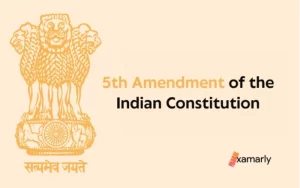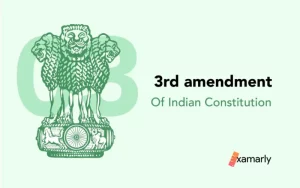Article 333 of the Indian Constitution addresses the representation of the Anglo-Indian community in the Indian State Legislative Assemblies.
Read along to have a thorough understanding of Article 333 of the Indian Constitution & it’s special provisions.
- Article 333 Of The Indian Constitution – Elaborated
- Summary
- FAQs Related To Article 333 Of The Indian Constitution
- What does Article 333 of the Indian Constitution say?
- What is the difference between the legislative council and legislative assembly?
- Is Anglo-Indian reservation in state Legislative Assemblies a permanent feature?
- How is the member nominated under Anglo-Indian reservation elected in Legislative Assemblies?
- Is the Anglo-Indian representation in Legislative Assemblies reviewed after every census?
Article 333 Of The Indian Constitution – Elaborated
Article 333 of the Indian Constitution lays down special provisions for the representation of the Anglo-Indian community in the state legislatures.
It states that the Governor of a State may nominate one member from the Anglo-Indian community to the Legislative Assembly of that state despite the requirements outlined in Article 170 of the Indian Constitution if he is of the view that the Anglo-Indian community-
- needs representation in the Legislative Assembly, and
- is not adequately represented at present.
This provision is separate from the process of direct elections that are used to select members of the assembly and it is a discretionary power of the governor.
The Anglo-Indian community is a minority community in India, consisting of people of European descent who have lived in India for several generations.
Article 333 of the Indian Constitution intends to ensure that the community has representation in the state legislature, so that their interests and concerns can be taken into account when laws and policies are being formulated.
It is worth noting that the Representation of Anglo-Indian Community in the Legislative Assembly is not a permanent feature and the President can withdraw or lead a revision for reservation if the community is adequately represented.
This provision for reservation is made to ensure representation of minority community and not for the permanent reservation of seats.
Summary
Article 333 of the Indian Constitution states the provision for reservation of seats for the Anglo-Indian community in the Legislative Assemblies of Indian states.
It is a temporary feature & authorises the Governor to nominate one member into the concerned state’s legislative assembly upon his discretion.
You Might Also Like To Read: Article 323 Of The Indian Constitution.
FAQs Related To Article 333 Of The Indian Constitution
What does Article 333 of the Indian Constitution say?
Article 333 of the Indian Constitution deals with the reservation of seats for the Anglo-Indians in the Legislative Assemblies of the states.
What is the difference between the legislative council and legislative assembly?
The Legislative Council is the upper house of the state legislature, while the Legislative Assembly is the lower house.
The membership of the Legislative Assembly is based on direct elections, while the members of the Legislative Council are elected through a different method such as MLAs, local bodies, Graduates and teachers.
Additionally, the number of members in the Legislative Council of a state is typically one-third or one-fourth of the membership of the Legislative Assembly.
Is Anglo-Indian reservation in state Legislative Assemblies a permanent feature?
No, the representation of Anglo-Indian community in state Legislative Assemblies is not a permanent feature.
The President may withdraw the representation if the community is adequately represented.
How is the member nominated under Anglo-Indian reservation elected in Legislative Assemblies?
The member nominated under Anglo-Indian reservation in Legislative Assemblies is not elected through direct elections, instead nominated by the Governor of the State on the advice of the President.
Is the Anglo-Indian representation in Legislative Assemblies reviewed after every census?
The representation of Anglo-Indian community in Legislative Assemblies is not explicitly reviewed after every census as in the case of scheduled castes and tribes but The President may, by order, withdraw the representation if the community is adequately represented.






